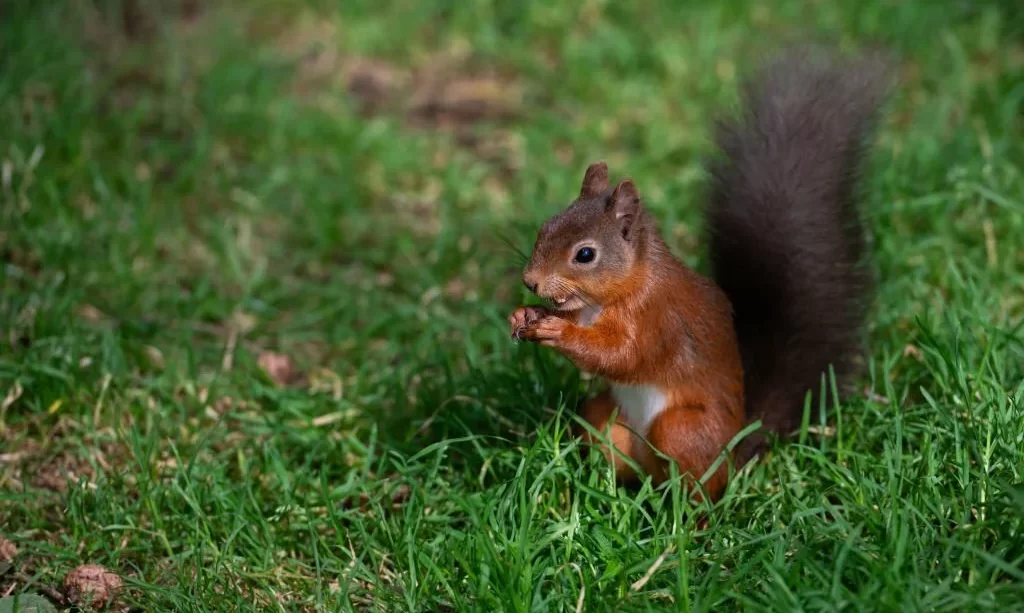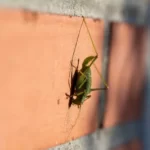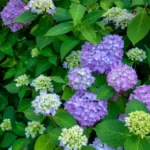Squirrels, with their charmingly bushy tails and acrobatic feats, have long been a subject of fascination and observation for both nature enthusiasts and city dwellers. These ubiquitous rodents possess a curious blend of adaptability and ingenuity, particularly when it comes to their foraging and dietary habits. Amid this inquisitiveness, a particular question looms large: Do squirrels, those nut-loving foragers, ever include the simple greenery of grass in their diet? This comprehensive exploration endeavors to shed light on the dietary proclivities of squirrels, with a special focus on their potential consumption of grass. This inquiry is not merely a matter of curiosity; it offers insights into the role of squirrels in ecosystems and the delicate balance they strike between being nature’s nut hoarders and potential grazers of grasslands.
The Versatile Diet of Squirrels
Squirrels, those agile acrobats of the animal kingdom, are renowned for their adaptable dietary preferences. Their culinary flexibility is as remarkable as their agility and dexterity. These creatures are primarily herbivores, yet their diets are far from being monotonous. Squirrels, much like their adaptability in navigating treetops, adjust their diets to accommodate various food sources based on seasonal availability and nutritional requirements.
In the spring and summer months, squirrels show a proclivity for tender shoots, leafy greens, and an assortment of seeds. These months are synonymous with the vibrant growth of vegetation, and squirrels are quick to take advantage of this abundance. However, as autumn ushers in its cool breezes and falling leaves, squirrels change their culinary focus to the more substantial fare of nuts, acorns, and seeds found within pinecones.
This dietary versatility extends even further, encompassing fruits and a variety of vegetation. The consumption of grass by squirrels falls into this category, making it one of the aspects of their dietary choices that we aim to unravel. Understanding the dietary habits of squirrels not only enriches our appreciation for these creatures but also offers insights into the vital role they play in ecosystems, from being seed dispersers to grazers of greenery.
Grass – A Common Greenery
Grass, with its lush and ubiquitous presence, is one of the most recognizable forms of vegetation across the globe. Whether it’s the manicured lawns of suburban neighborhoods or the sprawling meadows of the countryside, grass blankets our landscapes. Grass encompasses a diverse array of species, each adapted to thrive in different environments, from cool-season fescues to warm-season Bermuda grass. As the primary component of lawns, pastures, and natural grasslands, it plays an integral role in shaping ecosystems.
Grass serves as more than just a decorative feature; it is essential for a variety of animals, particularly herbivores. Grazers like deer and rabbits depend on grasses as a primary food source. Additionally, many insects, such as crickets and grasshoppers, make their homes within the blades of grass. Grasses are also significant for the overall health of ecosystems, as they help stabilize soil, provide oxygen, and act as a carbon sink.
The nutritional content of grass is notable, as it’s a source of fiber, vitamins, and minerals. For many herbivores, it provides a balanced diet. This abundance of grass has led to the question of whether squirrels, with their adaptable diets, ever partake in this common greenery.
Do Squirrels Eat Grass?
The question of whether squirrels consume grass invites exploration through scientific observations and studies that seek to unveil the dietary habits of these nut-loving rodents. The answer reveals that squirrels, despite their penchant for a variety of foods, do not frequently consume grass.
While squirrels are omnivores with a proclivity for nuts, seeds, fruits, and certain vegetation, grass is not a staple in their diet. Squirrels are not grazers in the same way as deer or rabbits, which rely primarily on grass as a dietary staple. Instead, squirrels tend to prefer the nutritional richness of seeds and fruits, which provide them with essential fats, proteins, and carbohydrates.
Observations of squirrels eating grass are rare and typically occur in specific circumstances, such as when they’re experiencing gastrointestinal distress and seek out plant material to aid digestion. For squirrels, grass is more of a digestive aid than a primary food source.
Squirrels’ limited interest in consuming grass aligns with their overall strategy of finding foods that provide a concentrated source of nutrients. While they may nibble on grass occasionally, it is not a significant part of their diet. Understanding this aspect of squirrel behavior adds to our appreciation of these resourceful animals and their unique dietary adaptations.
The Impact of Squirrels on Grasslands
Squirrels, by and large, are not known to significantly affect grasslands. Unlike herbivores like deer or rabbits, whose grazing habits can profoundly shape the structure of grasslands, squirrels are not extensive consumers of grass. This means that they do not typically have a direct impact on the growth or composition of grasslands. However, their behavior does contribute to the ecological dynamics of grasslands in some nuanced ways.
One indirect influence of squirrels on grasslands is through their role as seed dispersers. Squirrels gather and bury nuts and seeds, often in the ground, and sometimes forget where they’ve hidden these caches. This unintentional seed dispersal can actually aid the regeneration of grassland plants. While squirrels may not actively consume grass, they can play a part in the propagation of grassland flora through their seed-burying behavior.
Furthermore, the presence of squirrels in grassland ecosystems can have a cascading effect. Their activities can draw the attention of predators like hawks and foxes, influencing the distribution and behavior of these species within the grasslands. This, in turn, can have an impact on the populations of smaller animals and insects that inhabit the grasslands.
Tips for Coexisting with Squirrels and Grass
For individuals interested in maintaining grassy landscapes or lawns while sharing their environment with squirrels, coexistence can be achieved through several practical strategies:
- Plant Diversity: Incorporate a variety of plants in your landscape, including shrubs and trees. This diversity can reduce the pressure on grasses and provide squirrels with alternative food sources.
- Protect Vulnerable Areas: If you have specific grassy areas or ornamental grasses you want to protect from squirrels, consider using protective measures like fencing or deterrents.
- Consider Squirrel Feeders: Provide squirrel feeders stocked with nuts or seeds as an alternative food source to divert their attention from grassy areas.
- Maintain Landscapes: Regularly mow and maintain your grassy areas, which can help deter squirrels from exploring those spaces for food or shelter.
- Responsible Practices: Always use humane and eco-friendly methods when managing squirrel interactions with your lawn or garden.
Conclusion
In conclusion, the consumption of grass by squirrels is a subject that reveals the intricate relationship between wildlife and the environments they inhabit. Squirrels, with their versatile and adaptable diets, do not typically graze on grass as their primary food source. Instead, they gravitate toward nuts, seeds, fruits, and other vegetation that offer a more concentrated source of nutrients.
While squirrels do not directly impact the growth of grasslands, they play a subtle role in the ecological dynamics of these environments through their activities as seed dispersers and their influence on predator-prey relationships. This nuanced interaction highlights the interconnectedness of species in the natural world and the multifaceted role of squirrels in maintaining ecological balance.
Understanding that squirrels do not actively graze on grass helps individuals find harmonious ways to coexist with these resourceful creatures while preserving their own landscapes. Responsible practices that prioritize both the needs of wildlife and human interests contribute to a healthier, more balanced natural world.



